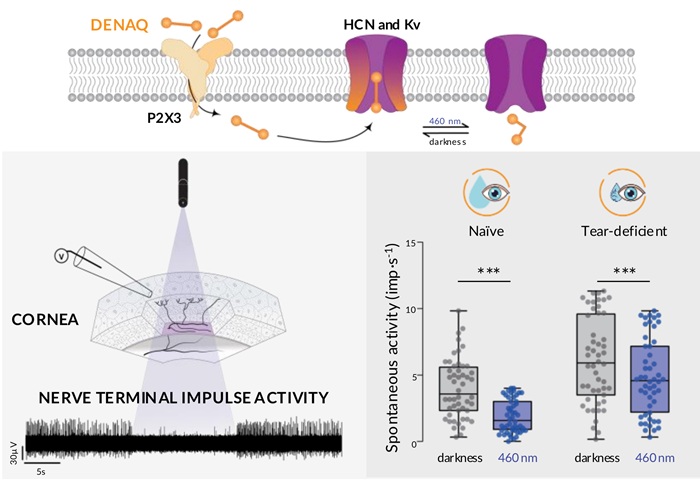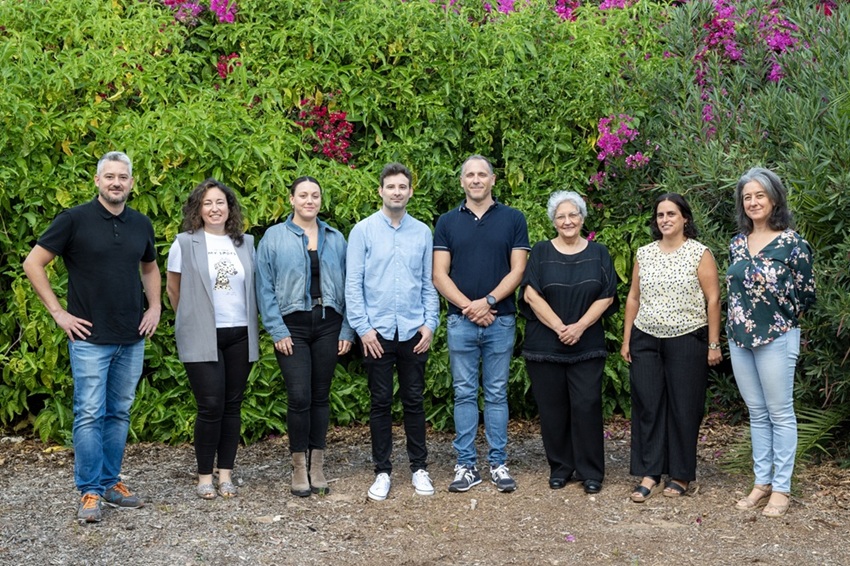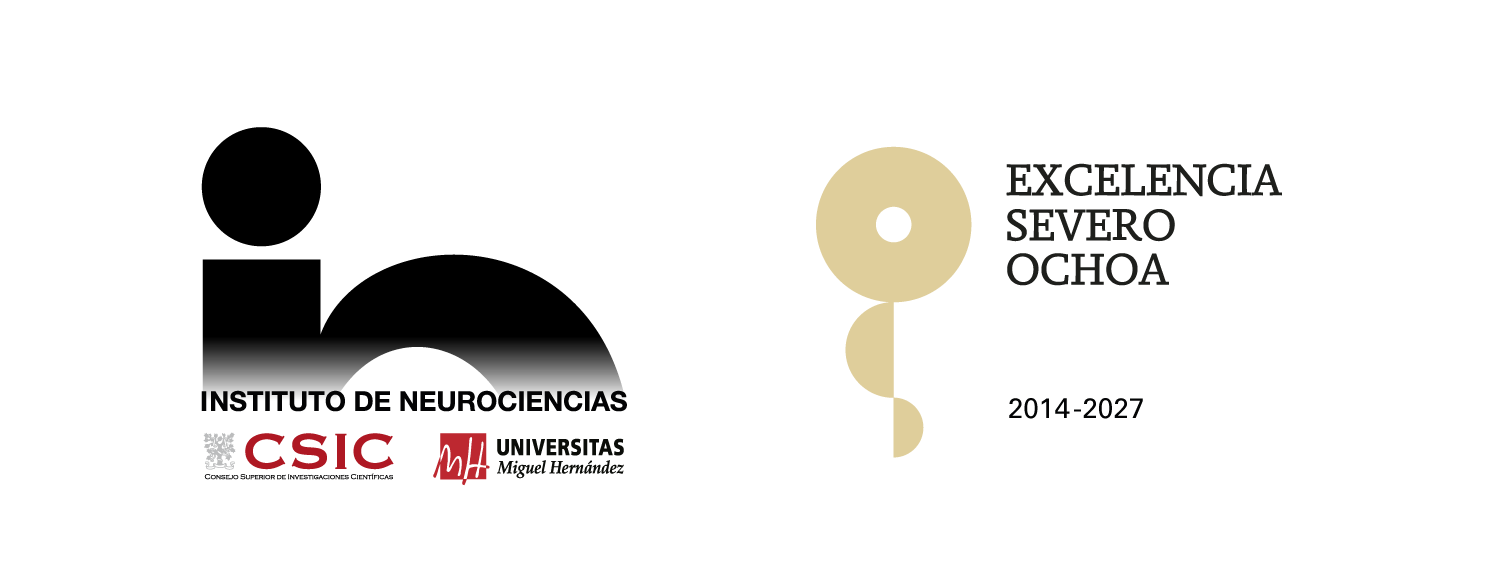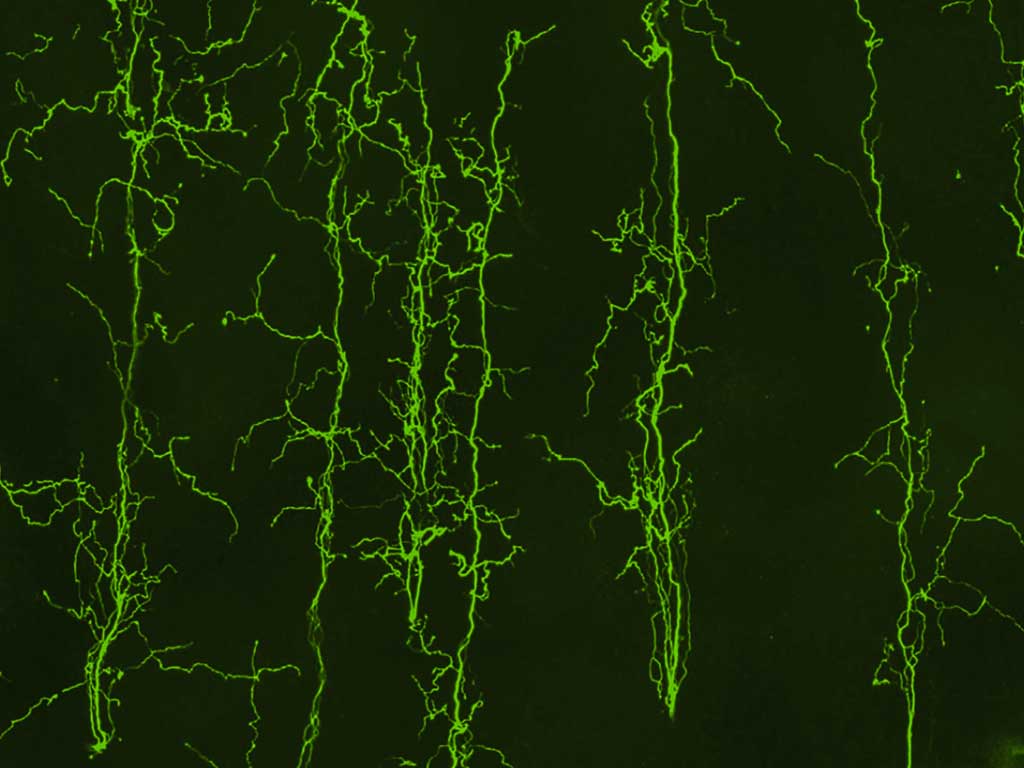Optochemical modulation of corneal cold nerve terminal impulse activity with a photochromic ion channel blocker.
Light to relieve dry eye: a photosensitive molecule modulates corneal nerve activity
• The study, led by the IN UMH-CSIC, demonstrates that optopharmacology can modulate corneal nerve hyperactivity without suppressing its protective function.
• The findings, published in the journal British Journal of Pharmacology, open the door to localized and reversible treatments to relieve ocular discomfort
(Photo: The team from the Ocular Neurobiology Laboratory who participated in the study: Fernando Aleixandre, Ariadna Díaz, Almudena Íñigo, David Ares, Víctor Meseguer, Juana Gallar, Susana Quirce, and M. Carmen Acosta. Source: IN UMH-CSIC)
The electrical activity of the nerve endings that detect cold in the cornea is essential for maintaining the health of the ocular surface, as it regulates blinking and tear production. However, when this activity becomes excessive, as occurs in dry eye syndrome, it can lead to persistent discomfort. A new study led by researcher Víctor Meseguer, co-head of the Ocular Neurobiology Laboratory at the Institute for Neurosciences (IN), a joint center of the Miguel Hernández University (UMH) of Elche and the Spanish National Research Council (CSIC), demonstrates that a light-sensitive molecule called DENAQ can modulate this nerve hyperactivity when exposed to blue light, reducing abnormal signals without eliminating normal cold sensitivity.
“The most interesting thing is that light doesn’t block the function of these nerves; it restores it to normal. Under dry eye conditions, the nerve endings are firing excessively, and in the presence of the optopharmaceutical and light, we manage to bring their activity back to healthy levels”, explains Meseguer. The study, published in the British Journal of Pharmacology, shows that DENAQ acts as a chemical switch: by changing its conformation under blue light, it modulates ion channels in corneal neurons and reduces their excitability. Experiments carried out in guinea pig and rat models confirmed that this effect persists even in corneas with induced dryness, without altering the normal response to cold stimuli.
Using DENAQ allows for precise control of peripheral nerve activity through light stimulation. This ability to fine-tune nerve excitability provides an unprecedented level of control in sensory structures like the cornea, where maintaining protective function is essential while avoiding overstimulation that causes pain or irritation. Acting only on the affected area and in a reversible way makes this approach a promising alternative to conventional pharmacological treatments, which often cause side effects or loss of sensitivity.
Furthermore, the study offers new insight into the molecular mechanisms of corneal receptors. The researchers found that the molecule enters the nerve endings through P2X3 channels, structures not previously described as playing this role in the cornea. This finding paves the way for designing more specific photosensitive drugs in the future.

The DENAQ molecule enters guinea pig corneal nerve endings through P2X3 channels, enabling photomodulation of nerve activity in a dry eye model. Source: IN UMH-CSIC.
This approach falls within the emerging field of optopharmacology, which modulates nervous system activity using light without requiring genetic manipulation, unlike optogenetics. “This is the first time a photosensitive molecule has been shown to control corneal nerve activity with light. It provides strong proof of concept for developing therapeutic strategies based on optopharmaceuticals”, notes David Ares, first author of the article.
“These results reinforce the idea that we can control peripheral nerve activity in a localized, precise, and reversible manner using light-sensitive drugs. In the future, this could help alleviate dry eye symptoms or other peripheral neuropathies”, adds Meseguer.
The DENAQ molecule was synthesized in collaboration with the group led by Professor Richard H. Kramer at the University of California, Berkeley, a global reference in the development of photosensitive compounds. Kramer’s team characterized the molecule’s photodynamic properties and its activity in retinal ganglion cells.
This research was funded by the Spanish State Research Agency – Ministry of Science, Innovation and Universities, the NextGenerationEU Program, and the Regional Ministry of Education, Culture, Universities and Employment of the Generalitat Valenciana.
Source: Institute for Neurosciences UMH-CSIC (in.comunicacion@umh.es)


 Español
Español
